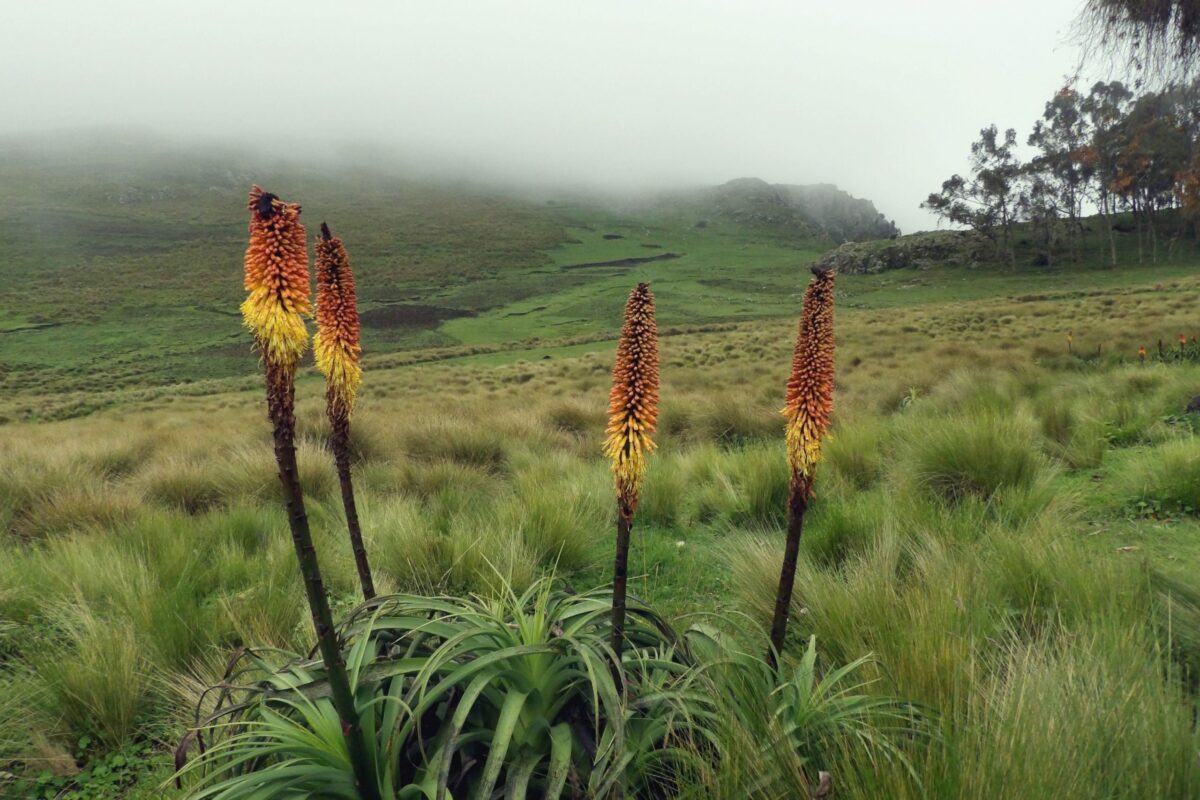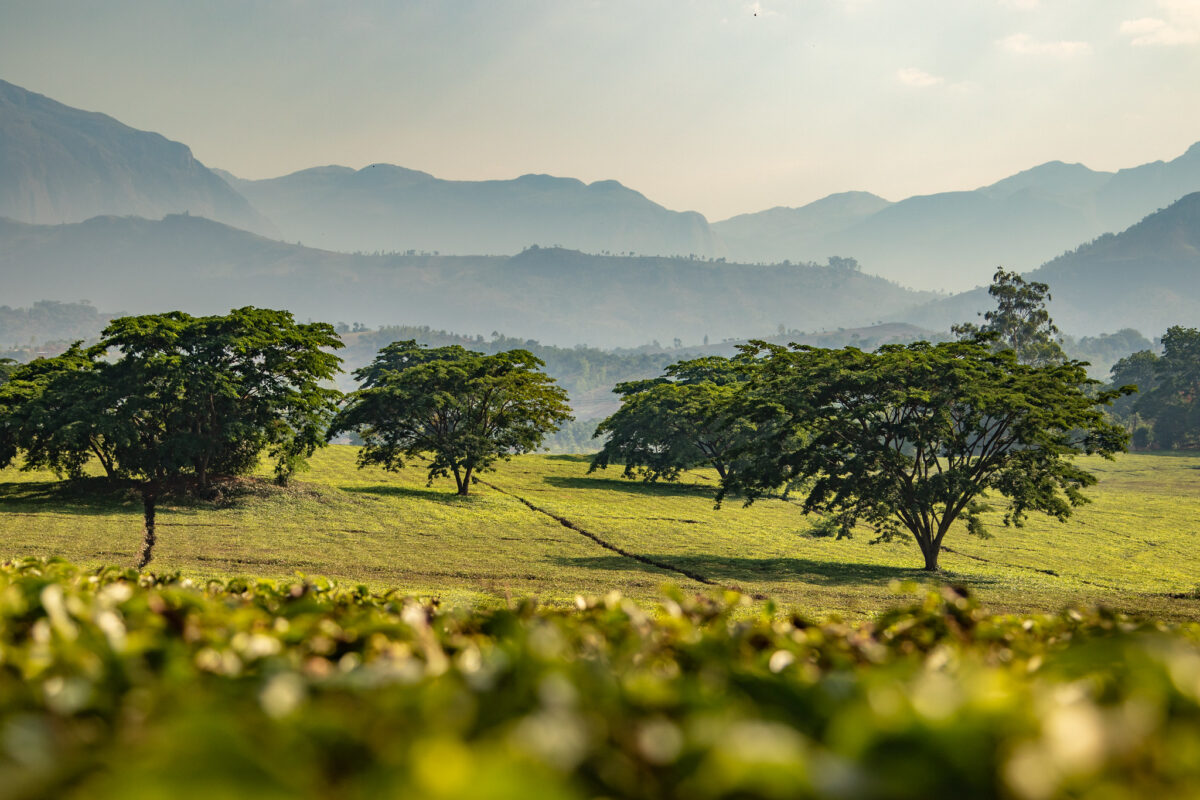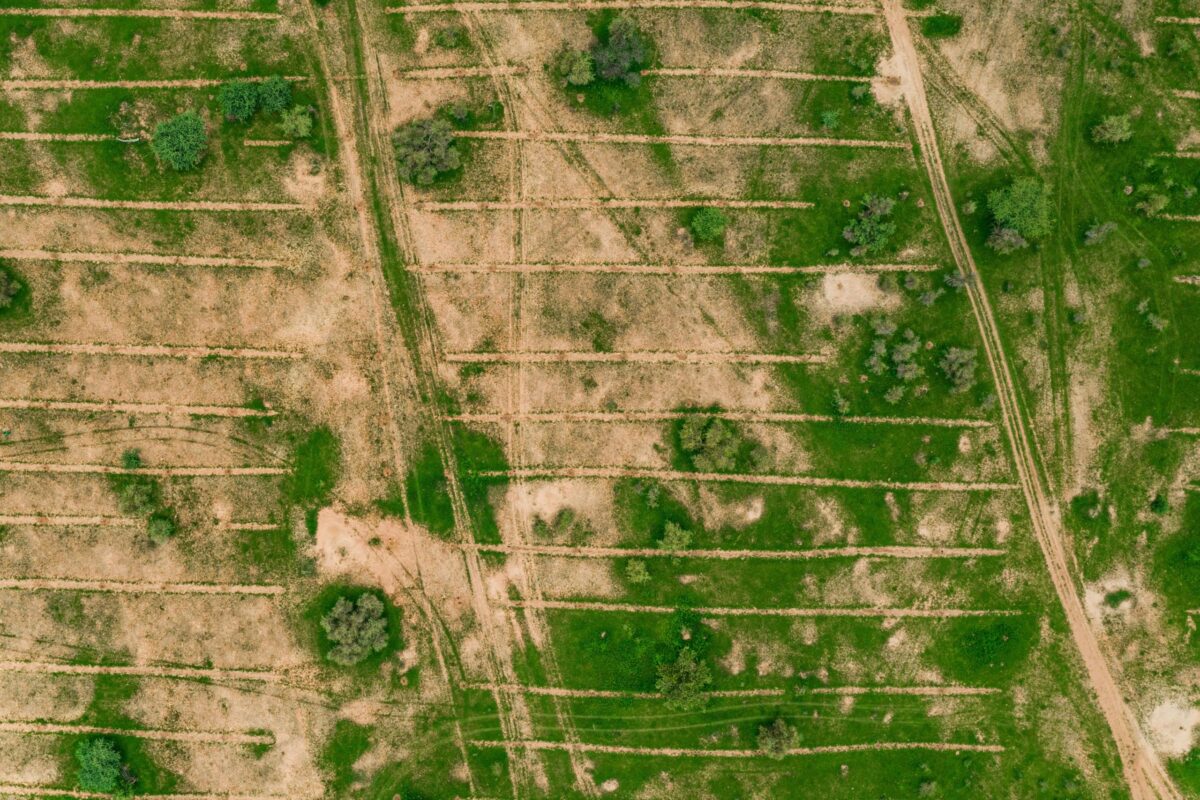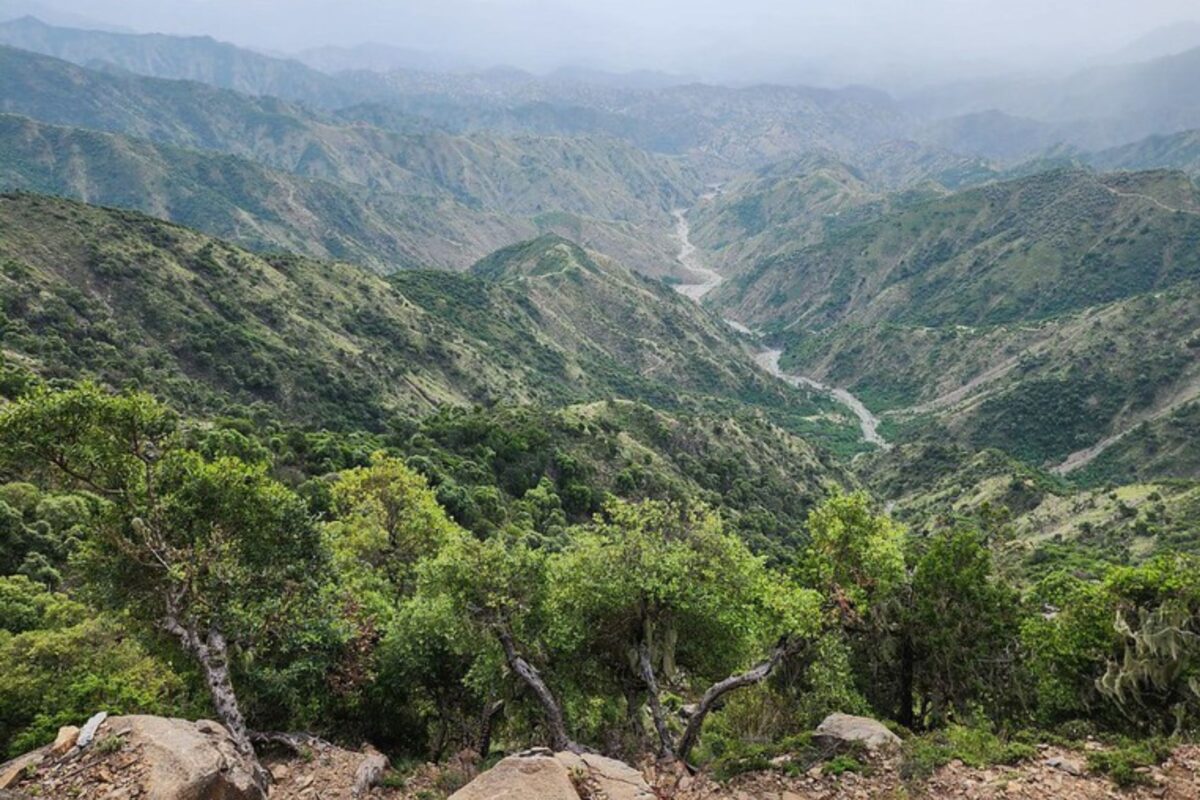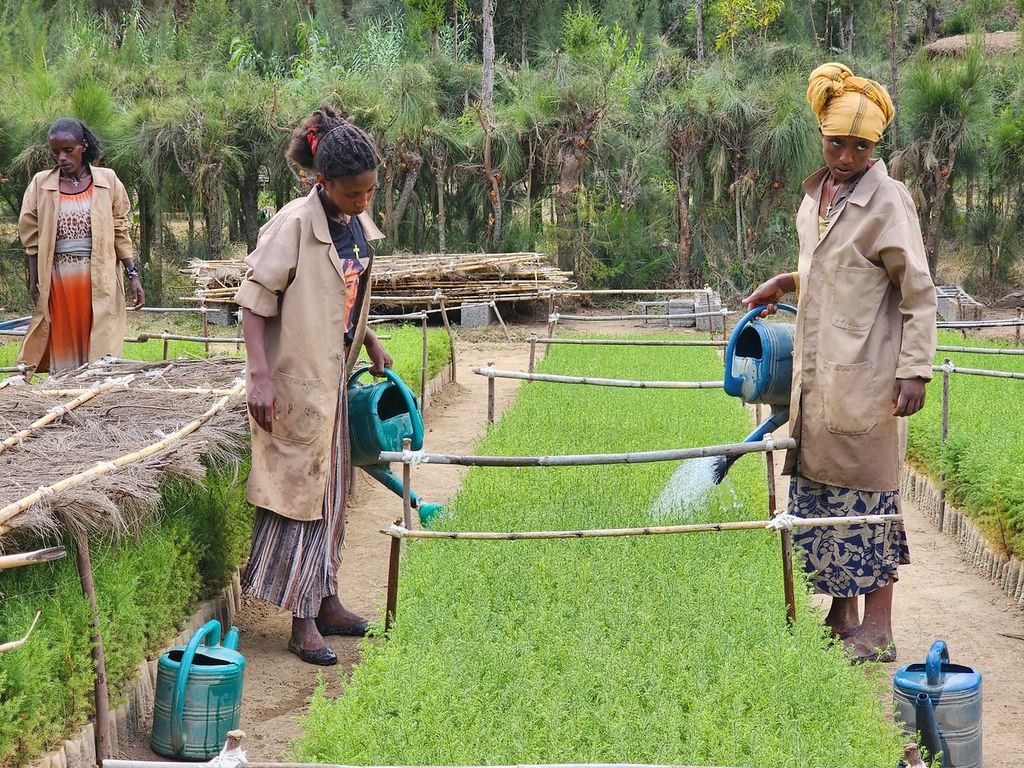The photo on the left shows that there is soil erosion upstream: the water is dark with sediment, heavy rainfall having disturbed the soil and carried it into the stream.
You can clearly see the improvement in water quality in the second image, which was taken approximately 75 metres downstream from the first one in our 6 hectare Deba Meret planting site, where restoration started in 2017. The growing trees have slowed down the heavy rain, helping it to soak gently into the ground without causing soil erosion.
Soil erosion is one of the many serious outcomes of forest degradation. Trees and their roots anchor soil, as well as providing shelter from wind and rain. When trees are removed, the soil becomes exposed and is washed or blown away.
In turn, soil erosion results in the loss of fertile land, as well as increased pollution and sedimentation in streams and rivers. This can result in declines in fish and other species.
So how does restoration help? As streams flow through restored sites, the roots of trees and small vegetated dams slow the moving water down – and without the fast moving energy, the soil drops to the bottom. The roots and dams trap this sediment and stop it from being swept further downstream.
Here in Deba Meret, the restoration has already had a tremendous impact for the 26 families who rely on this stream for washing and for water for their livestock.
Download the PDF “Cleaning Water in Ethiopia” here.


